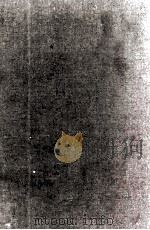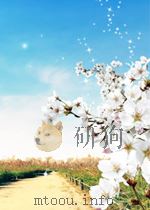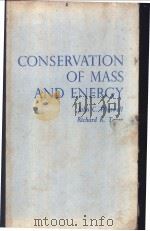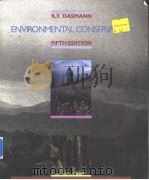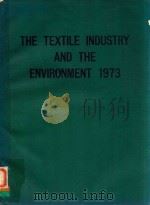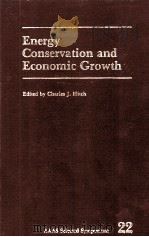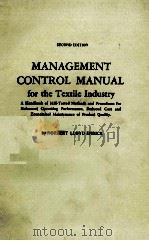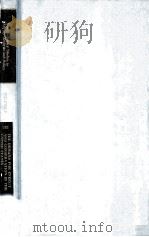《THE TEXTILE INDUSTRY Environmental Control and Energy Conservation》
| 作者 | Sidney G.Cooper 编者 |
|---|---|
| 出版 | NOYES DATA CORPORATION |
| 参考页数 | 385 |
| 出版时间 | 没有确切时间的资料 目录预览 |
| ISBN号 | 0815505442 — 求助条款 |
| PDF编号 | 811535748(仅供预览,未存储实际文件) |
| 求助格式 | 扫描PDF(若分多册发行,每次仅能受理1册) |
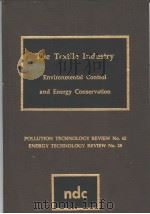
INTRODUCTION1
Industry Overall Structure1
Growth Trends in the Industry4
Some Technology Trends in the Industry6
Solvent Dyeing6
Liquid Ammonia Dyeing9
“Air Lift” Dye System9
Water Jet Weaving10
Transfer Printing10
Trends in Industry Waste Generation10
INDUSTRY COMPONENT CATEGORIZATION21
Spinning23
Texturizing25
Weaving27
Knitting30
Woven Fabric Preparation32
Woven Fabric Dyeing42
Woven Fabric Printing43
Woven Fabric Finishing44
Knit Fabric Finishing45
Yarn Dyeing52
Carpet Yarn Preparation60
Floor Covering Manufacture60
Secondary Processes67
ENERGY CONSIDERATIONS70
Energy Use Patterns in the Overall Textile Industry71
Energy Use Patterns by Industry Component Category75
Spinning75
Texturizing78
Weaving80
Knitting81
Greige Mills—Woven83
Woven Fabric Finishing90
Knit Fabric Finishing94
Yarn Dyeing96
Floor Coverings98
Secondary Processes Component100
Integrated Woven Fabric Mill102
Energy Conservation Achievements to Date104
Conflicts with EPA or OSHA Regulations106
Energy Conservation Possibilities107
Energy Efficient Technologies108
Alternative Operating Procedures110
Technologically Feasible Conservation Combinations140
Spinning140
Texturizing140
Weaving140
Knitting140
Greige Mills141
Woven Fabric Finishing141
Knit Fabric Finishing142
Yarn Dyeing142
Floor Covering143
Secondary Processes143
Overall Industry Composite Results143
Economically Feasible Conservation Combinations145
Spinning and Greige Mills149
Woven and Knit Fabric Finishing149
Yarn Dyeing150
Floor Covering Mills150
Impact of Conversion from Scarce Energy Forms151
Boiler Fuels151
Other Fuel Conversions152
Setting of FEA Conservation Target Goals153
Technologically Feasible Level153
Economically Feasible Level154
Special Circumstances/Characteristics155
Target Calculation156
Sensitivity of Target to Key Variables159
Some Specific Energy Conserving Process Options163
Integrated Knit Fabric Mill163
Integrated Woven Fabric Mill171
Post-1980 Considerations178
Further Research Recommendations179
AIR POLLUTION181
Sources of Emissions181
Control Technology183
Particulate Control183
Solvent Control and Recovery186
Some Proprietary Processes187
WATER POLLUTION191
Water Use by the Textile Industry192
Wastewater Sources193
Bleaching195
Carpet Manufacturing195
Desizing196
Dyeing197
Finishing197
Greige Goods Mills197
Mercerization199
Scouring199
Secondary Processes200
Wool Finishing200
Wastewater Characteristics200
Cotton Mill Wastes204
Wool Processing Wastes207
Synthetic Fiber Mill Wastes208
Regulatory Constraints211
Best Practicable Control Technology Currently Available (BPCTCA)213
Best Available Technology Economically Achievable (BATEA)225
New Source Performance Standards228
In-Plant Treatment Technology229
Flow Reduction229
Water Reuse235
Waste Segregation239
Material Substitution239
Process Changes243
Pretreatment Methods244
Wastewater Treatment Technology256
Biological (Secondary) Treatment263
Tertiary Treatment278
Advanced Wastewater Treatment287
Abatement Options by Level and Subcategory291
HAZARDOUS WASTES310
Definition310
Types of Hazardous Wastes311
Heavy Metals311
Dyestuffs313
Treatment of Hazardous Wastes316
SOLID WASTES322
Sources of Hazardous Solid Wastes322
Wool Scouring325
Wool Fabric Dyeing and Finishing326
Greige Goods328
Woven Fabric Dyeing and Finishing328
Knit Fabric Dyeing and Finishing329
Carpet Dyeing and Finishing331
Yarn and Stock Dyeing and Finishing332
Summary333
Nonhazardous Solid Waste Streams339
Disposal Techniques340
NOISE POLLUTION346
Some Proprietary Processes351
GLOSSARY352
BIBLIOGRAPHY383
《THE TEXTILE INDUSTRY Environmental Control and Energy Conservation》由于是年代较久的资料都绝版了,几乎不可能购买到实物。如果大家为了学习确实需要,可向博主求助其电子版PDF文件(由Sidney G.Cooper NOYES DATA CORPORATION 出版的版本) 。对合法合规的求助,我会当即受理并将下载地址发送给你。
高度相关资料
-
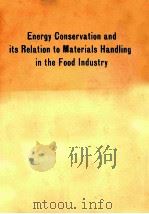
- ENERGY CONSERVATION AND ITS RELATION TO MATERIALS HANDLING IN THE FOOD INDUSTRY 1975 FOOD INDUSTRY S
- 1975
-
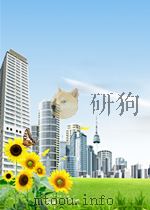
- IEEE 1992ANNUAL TEXTILE,FIBWER AND FILM INDUSTRY TECHNICAL CONFERENCE HIGHLY EFFICIENT ENERGY METER
- 8 HYATT CHARLOTTE CHARLOTTE,NORTH CAROLINA
-
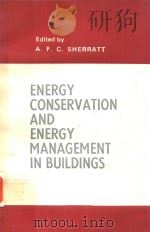
- Energy conservation and energy management in buildings
- 1976 Applied Science Publishers
-
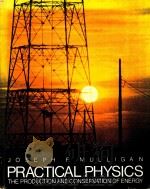
- PRACTICAL PHYSICS THE PRODUCTION AND CONSERVATION OF ENERGY
- 1980 MCGRAW-HILL BOOK COMPANY
-
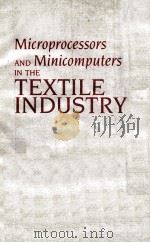
- Microprocessors and minicomputers in the textile industry
- 1983 Instrument Society of America
-
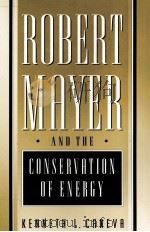
- ROBERT MAYER AND THE CONSERVATION OF ENERGY
- 1993 PRINCETON UNIVERSITY PRESS
-
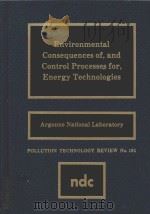
- ENVIRONMENTAL CONSEQUENCES OF AND CONTROL PROCESSES FOR ENERGY TECHNOLOGIES
- 1990 NOYES DATA CORPORATION
提示:百度云已更名为百度网盘(百度盘),天翼云盘、微盘下载地址……暂未提供。➥ PDF文字可复制化或转WORD
